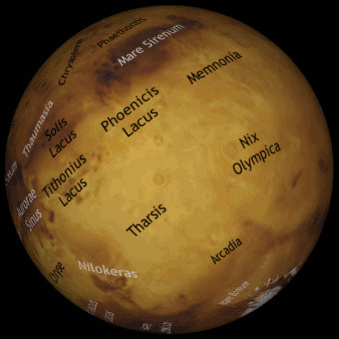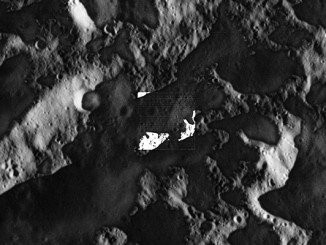
At the beginning of July, Mars lies in the constellation Libra and shines at a respectable magnitude -1.4 — comparable to the brightest stars. As seen from the centre of the British Isles, the Red Planet only manages to attain a peak altitude of 15 degrees (some three-quarters of the span of an outstretched hand at arm’s length) in the south around 10pm BST.
At the start of the month, Mars is about 54 million miles (86 million kilometres) distant, yet still exceeds 16 arcseconds in diameter. This means that a telescope magnification of little more than 100x will enlarge its ochre-coloured disc to the same size as the Moon appears to the unaided eye (incidentally, the ten-day-old gibbous lunar disc lies near Mars on Thursday, 14 July).
As July dawns, ringed planet Saturn resides in the constellation Ophiuchus about 19 degrees — or the span of an outstretched hand at arm’s length — to the left of Mars. Saturn is currently about magnitude +0.2, or about one-quarter as bright as its planetary sibling nearby. The ringed planet is 849 million miles (1,366 million kilometres) from Earth at the beginning of July, yet its disc still spans 18 arcseconds. Saturn’s north pole and the northern plane of its glorious ring system is tilted by a very favourable 26 degrees in our direction too. The waxing gibbous Moon pays Saturn a visit on Friday, 15 July.
Inside the magazine
Find out more about observing Mars, Saturn and the other planets in the July 2016 edition of Astronomy Now.
Never miss an issue by subscribing to the UK’s biggest astronomy magazine. Also available for iPad/iPhone and Android devices.




